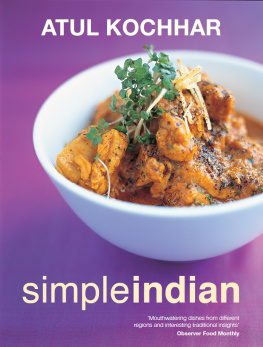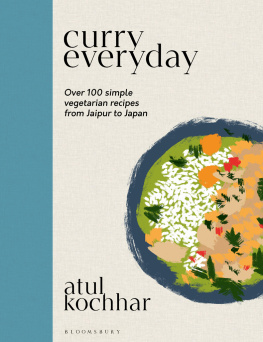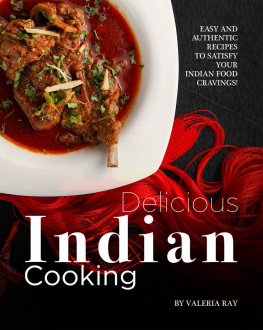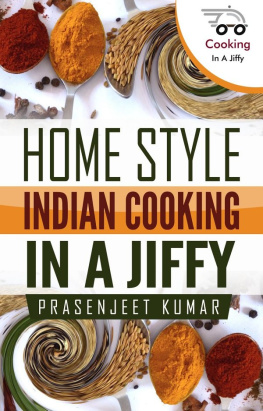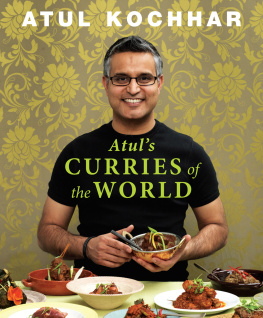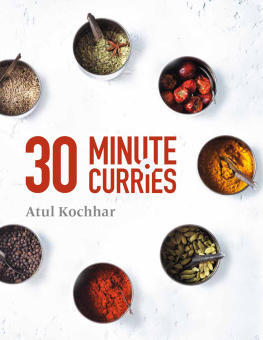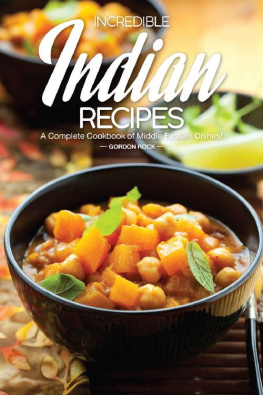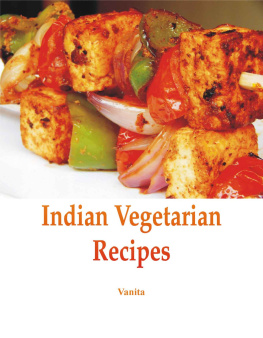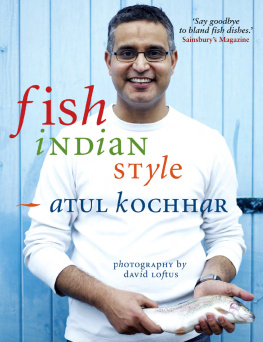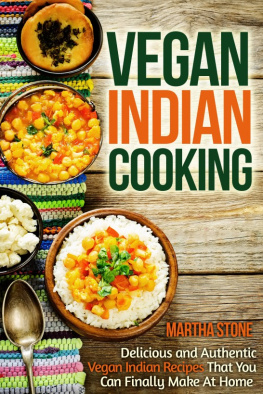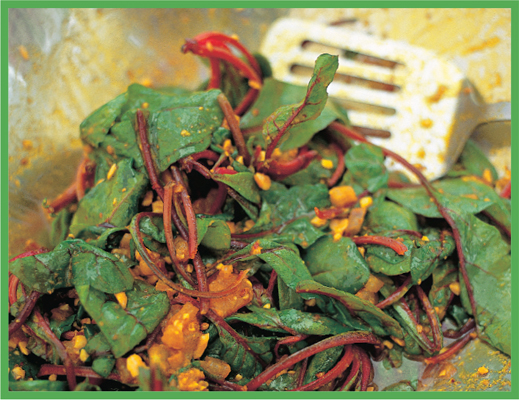



To my beautiful baby daughter Amisha Publishing director Anne Furniss Art director Helen Lewis Project editor Janet Illsley Senior designer Jim Smith Photographer David Loftus Food stylist Atul Kochhar Props stylist Jane Campsie Production Beverley Richardson First published in 2004 by Quadrille Publishing Limited Pentagon House 52-54 Southwark Street London SE1 1UN Quadrille is an imprint of Hardie Grant www.hardiegrant.com.au This shrunken edition first published in 2016 10 9 8 7 6 5 4 3 2 1 Text 2004 Atul Kochhar Photography 2004 David Loftus Design and layout 2004 Quadrille Publishing Limited The rights of the author have been asserted. All rights reserved. No part of thisbook may be reproduced, stored in a retrieval system or transmitted in any form orby any means, electronic, electrostatic, magnetic tape, mechanical, photocopying,recording or otherwise, without the prior permission in writing of the publisher. Cataloguing in Publication Data: a catalogue record for this book is available fromthe British Library. eISBN 978 1 84949 937 8 Printed in China NOTES All recipes serve 4 as part of an Indian meal featuring a selection of dishes, unlessotherwise indicated. Ingredients highlighted with an asterisk are explained in the .
All spoon measures are level unless otherwise stated: 1 tsp = 5ml spoon; 1 tbsp =15 ml spoon. Use fresh herbs unless dried herbs are suggested. Use sea salt and freshly ground black pepper unless otherwise stated. All vegetables and fruit should be washed and peeled as normal. Ovens and grills must be preheated to the setting specified in the recipe.
 | I would like to thank the Almond Board of California very much for all their help and support during this exciting project. |
CONTENTS
Indian food is as diverse as its culture, geography and climate.
It is vibrant, colourful,enticing, easy to prepare and wonderfully satisfying. The essence of good Indiancooking revolves around the appropriate use of aromatic spices. Spicing is not adifficult concept. In the same way that salt and pepper are used in the West, theskill lies in using spices to enhance rather than overwhelm the intrinsic flavourof a particular dish. From a young age, an Indian child is exposed to an extraordinary array of flavourcombinations, probably more so than in any other civilisation. Indian cuisine isbased on a variety of flavour sensations, which encompasses hot and sour, hot andnutty, sweet and hot, bitter and hot, bitter and sour, to name but a few.
In seasoning,it ranges from the freshness and sweetness of aromatic curry leaves to the dark pungencyof the resin, asafoetida. Indian genius lies not only in combining seasonings, butalso in drawing out several flavours from a single spice by roasting, grindingor frying to create a vast spectrum of flavours. Indians are adventurous and there is nothing that cannot be spiced up in an Indiankitchen, but it is important to understand the distinction between spice and heat.In India, heat is generally applied with chillies and selectively, whereas spicingis all about flavouring. In the south, chilli heat is valued for its ultimate coolingeffect on the body, by inducing perspiration. In the north, dishes are not overlyhot its all about bringing out the best of the spices. Though, of course, thereare always pickles and chutneys to impart fiery heat if required.
Indian ingredients and spices are relatively easy to source these days. Most supermarketsnow stock a good range of spices and ethnic ingredients, and Asian food stores offering fresh vegetables and fruits, as well as specialist dried goods are everywhere.If you do not have an Asian food store or well-stocked supermarket nearby, surf thenet for a mail order alternative you will find several specialist Indian food suppliers.You may also be able to buy ingredients in delicatessens and other food stores. ManyEgyptian, Iranian and Moroccan ingredients, for example, are similar to Indian items. Religious and regional influences Religion is said to be the most important aspect of Indian life and food its mostprecious resource. The majority of Indians are vegetarian due to their belief inHinduism, Jainism or Buddhism. Certain foods are deemed pure or sacred and featureprominently in temple rituals.
Food also plays an important role in the numerousfestivals and ceremonies across the sub-continent. Often a festival is associatedwith a particular food sweet semolina pancakes, for example, are synonymous withholi, the festival of colour. Although a number of religions exist in India, the two cultures that have influencedIndian cooking and food habits more than any other are the Hindu and Muslim traditions.Each new wave of settlers brought with them their own culinary practices. However,over time, they adopted specialities and cooking techniques from the Indian cuisineand merged them with their own to perfection. The Portuguese, Persians and Britishmade important contributions to the Indian culinary scene. For example, it was theBritish who started the commercial cultivation of tea in India.
The Hindu vegetarian custom is widespread in India, although many Hindus now eatmeat. The Muslim tradition is most evident in the cooking of meats. Mughlai food,kababs, rich kormas (curries) and nargisi koftas (meat balls), biryani, rogan josh,and preparations from the clay oven or tandoor, like tandoori rotis and tandoorichicken, are contributions from the Muslim settlers in India. As India is such a vast country, food customs vary from region to region. The northis the culinary heart of India, with Delhi at the hub, and this was the first regionalcuisine to set foot outside India. The food is rich and colourful, and the spicingis generally very aromatic.
Wheat is the staple food and roti (bread) is served atevery meal. A typical north Indian meal would consist of chapattis (unleavened breadbaked on a griddle) or parathas (unleavened bread fried on a griddle), rice and anassortment of dishes like dals, fried vegetables, curries, paneer, chutney and pickles.Most north Indian desserts are similar in taste as they are derived from a milk puddingor rice base and are usually soaked in syrup. Kheer, a form of rice pudding, andkulfi, a nutty ice cream are typical northern desserts. South India comprises Andhra Pradesh, Tamil Nadu, Karnataka and Kerala. The foodis generally light, non-greasy and fragrant with curry leaves, coconut and spices.Indeed, this is the main region for the production of spices. Rice is the staplefood and forms the basis of every meal.
It is usually served with

